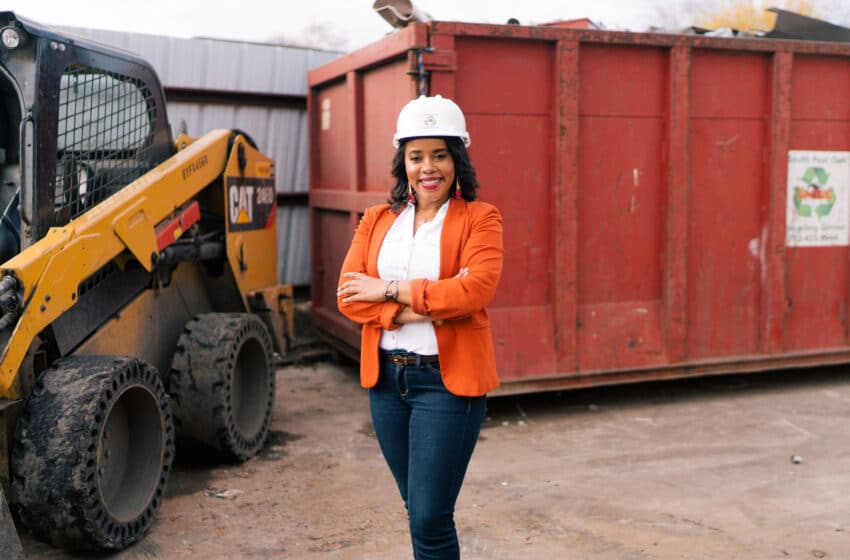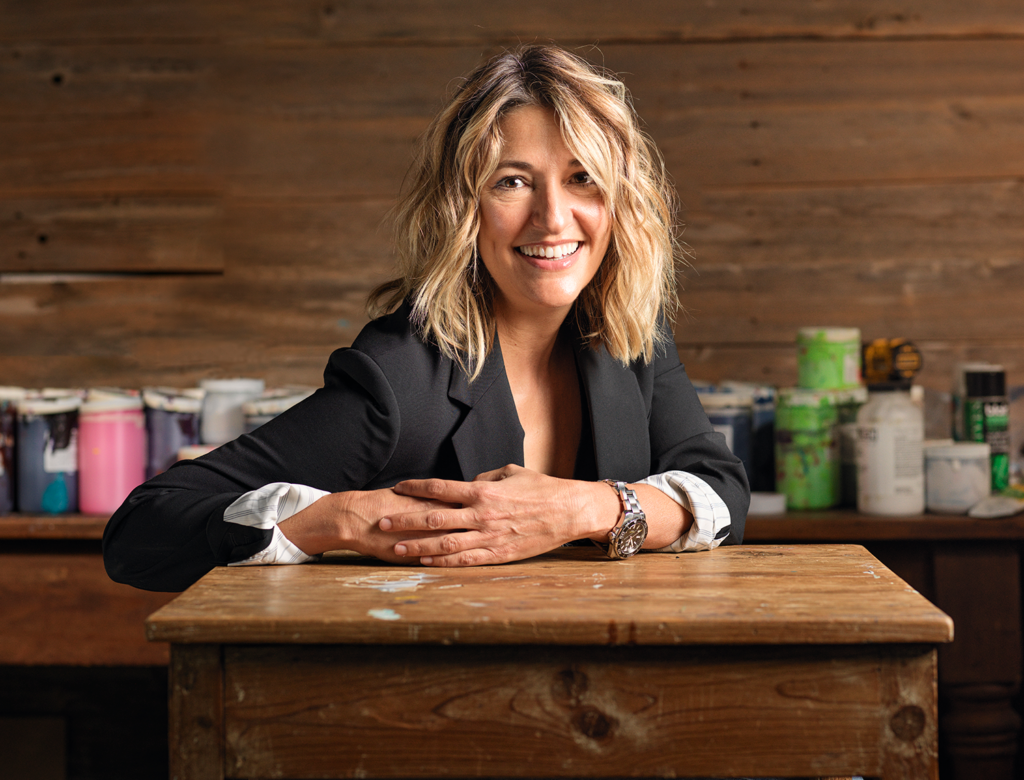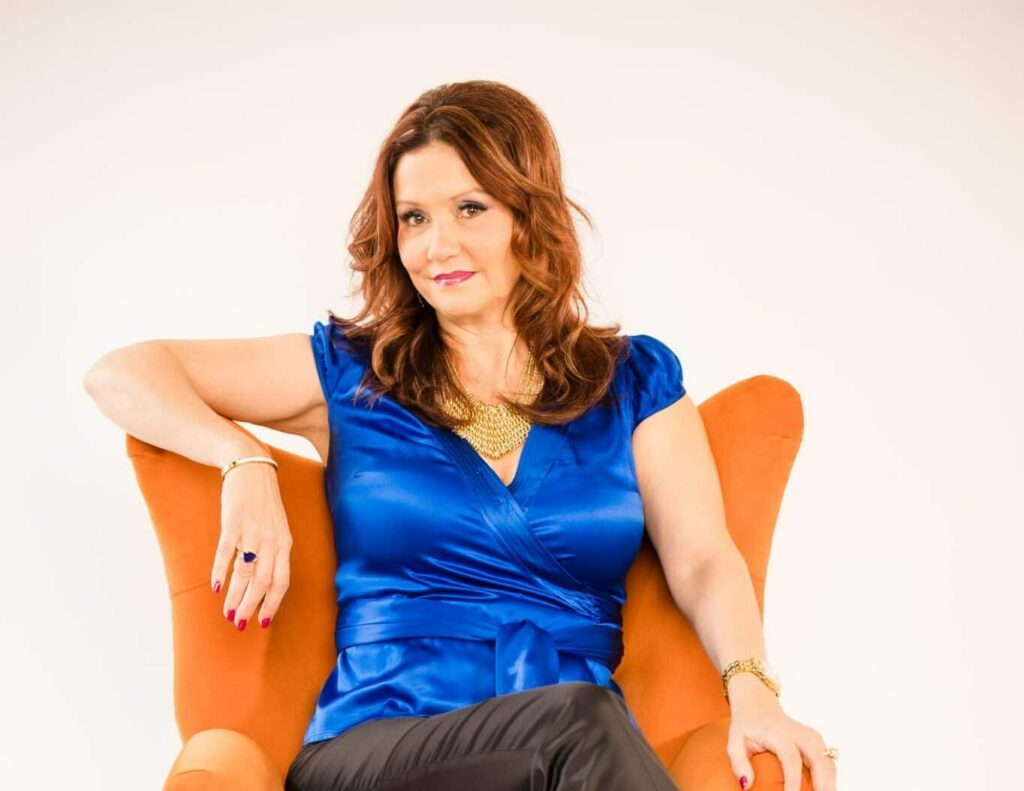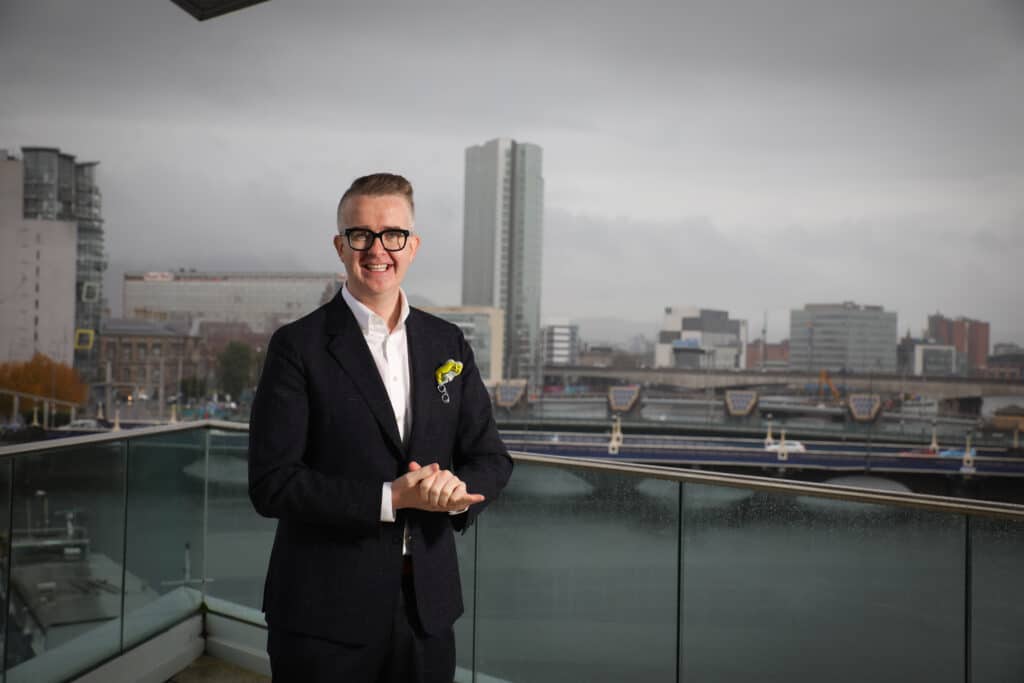A People-First Entrepreneur

After graduating with two psychology degrees, native Houstonian Brandi Harleaux found herself on the fast track to corporate success. Starting just out of college, she landed a string of high-level organizational development roles at companies like Target, Northrop Grumman, and eventually her dream employer: Disney.
But, as careers sometimes do, Harleaux’s took an unexpected turn. She found herself getting an MBA, stepping down from her leadership role at Disney, and returning to Texas to take over the family business. Now, as CEO of metal recycling company South Post Oak Recycling Center, she is continuing a legacy started by her father nearly 30 years ago and applying organizational development skills honed in Corporate America to smaller, scrappier venture.
In this conversation, we asked Harleaux about her singular career path and about her intensely people-focused approach to entrepreneurship and the CEO role. For Harleaux, business leadership is less about the limelight than the tangible impact her business has—on its employees, on its community, and on the broader sustainability movement.
What made you choose to study psychology?
When I was at Lamar High School in Houston, I took a psychology class and loved it. My high school counselor would bring in a different psychologist every month, a family practice psychologist, a child development psychologist, and so on. I kept saying, “Nope, not it.” The last one was an industrial organizational psychologist from the University of Houston. Once they started talking about blending people and business, that felt right.
So I went to the University of Houston to study psychology and minored in business. After college I got a graduate degree in industrial-organizational psychology from Cal State San Bernardino. There I learned I’m less interested in the I side of industrial-organizational psychology—statistics, test development, analytics, the quant stuff—than the O side, organizational, which is more about what motivates people, how to design and develop organizations, as well as how to take people through organizational change.
What was your first role out of grad school?
I had my first opportunity working at Target’s regional office in California. That was great, but I knew I wanted to work for what I call a “fun company”. My sights were on Disney, whose offices in Burbank were an hour away. Driving into Los Angeles once, I passed the corporate offices off the 134 freeway and took a picture of the building with the Mickey at the top. That became part of my vision. I was like, “I’m going to work there.”
My strategy was to plug into organizations where I could network with leaders in organizational development, with a focus on Disney leaders. So, I joined the American Society for Training and Development and drove into Los Angeles once a month to network. There was no opportunity at Disney for me yet, but I got an offer at Kaiser Permanente. While healthcare is an essential industry, it wasn’t the kind of “sexy company” I wanted to work for, but it was a good job.
Herein lies the first integrity lesson in my young adult life. After I got that opportunity, the job offer was rescinded. When I asked why, they said it was because I hadn’t “published” my dissertation—which was approved and completed but not published—so their conclusion was that I lied on my resume. I told them it was just going through the publication process, but that offer was no more. It was pretty devasting as a first career opportunity out of graduate school.
I’m a firm believer that a setback can be a setup for a new opportunity. And that really was a blessing in disguise because I ended up getting an opportunity to work in the leadership and talent management department at Northrop Grumman for about $20,000 more a year with a great boss who set the tone for me in terms of my professional and executive development.
Within a week or two at Northrop, I was told that I would be flying to Florida for an offsite strategy meeting. Any idea where we might have gone?
Disney?
Disney! Again I was like, “This opportunity is going to happen someday.” I spent a couple years at Northrop. I built my toolkit and worked closely with leaders across the company to practice what I learned in school. I received over 15 certifications and designations in areas that supported my role, such as personality and strengths assessments, plus additional training on leadership, the HR and talent management space, and organizational design. At the age of 25 I was being flown around the US to train executives on things like executive presence and conflict management.
Two years into Northrop, I get a call from one of the contacts I had cultivated at Disney: “Hey Brandi, we think your dream job became available.” I had on my board that I wanted this crazy title: GLOD, global leadership and organizational development. That’s what was available, and I got it.
So I went over to Disney in the consumer products division. I grew there while internally consulting with the interactive media division and ultimately ended up in that division for seven years, eventually leading the Learning and Organizational Development department. Leading a team focused on organizational development, managing an executive coaching program, and doing talent management, consulting, organizational design and strategy—all that ultimately became the foundation that equipped me for my next chapter.
How did you go from Disney to moving back and taking over the family business?
Back when I was at Northrop, I would be sitting on the 405 in traffic talking to my dad or mom. They founded South Post Oak Recycling Center in 1994 when he realized he could feed his family on recycling aluminum. He’d say, “Brandi, I’m going to want to sell this at some point.” At the time I wasn’t enticed to get into scrap metal recycling, but the seed was planted.
A few years later at Disney, one of the coaches I worked with, Peter Leets, told me something I’ll never forget. He says, “Brandi, what’s next for you? I see you flourishing here, but there’s something in me that says there’s more in you.”
I had always considered entrepreneurship and thought maybe I could open a franchise. I loved Smoothie King at the time. But Peter said, “Well, what about your family business?” I told him it wasn’t really on my radar, but he told me to think about it. He painted a picture I hadn’t seen. He said, “It’s the sustainability space. It’s the future.”
Between him and my dad, I did start considering it. I realized I was excited about making an impact in the sustainability space and putting my corporate experience to work in the family business. So in my last two years at Disney, I got my MBA at night from Pepperdine’s MBA program. Instead of doing market analysis, pulling industry data and valuations on companies I had no affiliation with, I did my analysis on South Post Oak Recycling Center. That analysis, coupled with ongoing conversations with my dad, equipped me with foundational industry and business knowledge to transition to COO of South Post Oak Recycling Center in March 2013 and eventually CEO in early 2020.

What was it like taking over leadership from your parents?
When I came on board in 2013, the business was nearing its 20th anniversary. Both of my parents were working in the business along with a tenured team. Like many entrepreneurs who grind and work six to seven days a week to grow a business, they were losing a little steam and zeal. We started family conversations about the business transition at least two years before I actually moved back to Houston from Los Angeles. Those conversations ranged from what I foresaw growth to look like, how that was different from the current strategy and trajectory, what each of our roles would be, how long my parents would stay in the business, and even the structure of the current team. There was definitely an interest in transferring the reins of the business and taking it to the next level. That said, as with many family businesses, transitioning is a process. There are emotional attachments and other variables to contend with. Then there is actually creating processes, systems, and a team of experts and advisors to enable a successful transition.
It was a growth process for us all! There was an ebb and flow of progress and staying semi-stagnant. It included times of being slightly frustrated because things were going slower than I had envisioned. It included times where I took action, made some changes, or took a leap and waited for the results and impact to prove themselves, which then led to more acceptance of the changes. Most importantly, it included my dad being an advocate, champion, and coach for me since day one in this business. Why is that important? Because historically this has been a very male-dominated industry, and one also dominated by people whose families have known each other for generations. So, to break into those circles and networks to cultivate meaningful and mutually beneficial relationships required a champion and advocate. I’m quite aware that’s not everyone’s experience in the industry, especially within a family business—for that, I am truly grateful. Those actions alone set the stage nicely for me to build relationships with buyers, vendors, mentors, employees, and our long-term customers, which all attributed to the growth we are seeing today.
In hindsight, it has worked out just the way it was supposed to! Our family is still as strong and connected as we were before I joined the business. I feel fortunate because I know not every family business experiences that in a transition. Generation one sometimes holds on so tightly that generation two cannot adjust and/or further the impact.
What kind of goals did you set initially?
One was to literally expand our footprint. We needed more space to process an increased amount of recyclable scrap metal projected in our growth plan. My parents already owned another acre and a half behind us that was not developed, so we expanded. Another growth goal was to diversify the customers we serve. When I came in, our product mix was about 75 percent of sales from households and contractors—people like you and me recycling cans or licensed electricians, plumbers, or HVAC technicians who had recyclable scrap metal from their job sites. The other 25 percent was more B2B—industrial and commercial accounts such as machine shops, HVAC companies, fabrication companies, and industrial corporations. My goal was to flip that ratio so we could do more high-volume business. Nine years later, we’ve nearly done it: 65 percent of our business is now B2B and B2G.
The third growth goal was to diversify our product mix. My dad’s background was in aluminum, but soon after launching the business we moved from just aluminum to all non-ferrous or non-iron metals. While steel and iron were entry points for many legacy metal recycling companies, we entered the market with everything except for iron. I felt very early on that we might be leaving money and opportunities on the table. We had customers who would recycle their non-ferrous scrap with us, but then they would go somewhere else to recycle and sell their iron. I knew that wasn’t the ideal situation. They would prefer a one-stop shop.
Today, those growth goals are on track, even though we saw a 40 percent decline in revenue during the first year of COVID. We ended last year more than 65 percent over our projected goals, the highest revenue we’ve seen since the start of the business. That’s our Cinderella story.
Coming from an organizational development background, how did you approach the people side of your job as CEO?
Those are some of the accomplishments I’m most proud of at South Post Oak Recycling Center. My dad always believed in hiring people most companies would not give a chance to. He had a “second-chance hiring program” where he would hire people who had some type of criminal record yet were looking for viable employment. That was just a part of what he did. I didn’t necessarily embrace that supplemental hiring strategy coming out of a corporate environment, but I quickly realized the value. After a couple years of interviewing candidates and asking a fairly common interview question— “Where do you want to be in three to five years”—and getting mostly blank stares, it became apparent to me that people needed to see more possibilities in life. A purpose bigger than growing a sustainable business was birthed. It became a passion of mine—not to build my whole workforce with second-chance folks, but to make it part of our ongoing recruiting model as well as building a work environment that cultivated the “whole person.”
We worked really hard on supporting our people in and out of work. Especially during COVID, we offered our employees training on personal finances through Dave Ramsey’s Financial Peace University. We’ve offered development opportunities in programs such as Vision 101, as well as information sessions with banks that support people with a challenged past. We’ve even implemented daily affirmations in our meetings to encourage a positive mindset at the onset of the day.
We worked really hard on supporting our people in and out of work. Especially during COVID, we offered our employees training on personal finances through Dave Ramsey’s Financial Peace University. We’ve offered development opportunities in programs such as Vision 101, as well as information sessions with banks that support people with a challenged past. We’ve even implemented daily affirmations in our meetings to encourage a positive mindset at the onset of the day.

What are your thoughts on the Great Resignation? Putting on your HR hat, what have you been seeing?
It’s absolutely fascinating. The tables have turned from the employer’s advantage to the employee’s advantage. We’re coming out of an era where many employers felt like paying people a salary was sufficient. Now, people are being challenged to be creative in how they take care of their people more fully. The smart ones aren’t saying “Wow, this sucks” but “How can we embrace this challenge?” I’m glad to see people developing retention strategies—not just throwing money at people—and not waiting until after the fact.
As part of the tables turning, you’re also seeing differences in how job candidates go about the job search. We’re not exempt from the challenges many employers are facing! Last year, we saw the greatest number of no-shows for interviews we’ve ever seen. Even after job offers were extended, about 20 percent of the people who received an offer didn’t show up on their first day or even let our recruiter know they weren’t taking the job.
I think there’s an upside to this Great Resignation though. It’s good that people are being more creative with cultures and benefits and work environments that people can thrive in holistically. In three years, I don’t think we’ll be calling it the Great Resignation. I think it’s a bigger shift in how we do business—specifically, it’s recognizing that people want to be in environments that have purpose and where they feel valued, challenged, kept in the loop, and have flexibility.
You referred to this being a male-dominated industry. How does that affect you?
There are some women, and the numbers have grown in the nine years I’ve been in the industry. However, I would say women are still a minority in this industry. The board of one trade association I’m involved in has over 60 people on it—and just three years ago there were only two women. I’m glad to say there continues to be progress, with seven women now serving on this board.
When I saw that women were calling for more female mentors, connections, and targeted development, I co-led the relaunch of a dormant women-in-recycling group. There was lots of support from men and women but also some vocal naysayers who literally said, “What do we need that for?” Since then, we’ve launched mentoring programs to help women grow and lead in this industry.
We’re also working with an organization called JASON Learning to educate kids K through 12 in STEM-based learning linked to recycling. This curriculum opens the door for a diverse group of youth to have exposure to careers in the recycling and sustainability space. I’m hopeful that we can expose people earlier on to those opportunities and increase the number of women and minorities in this space.

What would you say to leaders who aren’t part of a minority group who want to help others who might be locked out of traditional systems of support and opportunity?
One is to be an advocate for people who you see talent and potential in, even if they aren’t part of your usual circles. The second is to be curious and go “fishing in other ponds.” For example, if you only recruit from the schools you went to and hang out with the same people who are part of your clubs, go find talented people at a different school and hang out with people outside of your network. It’s so easy and comfortable to tap into who and what we already know. Instead, try plugging into different groups and organizations and schools and explore talent outside the groups you may be most accustomed to. That’s helped me in my journey, just broadening my reach. It’s so important to be curious and open to new people and possibilities!
The more open you are, the more you become exposed to all different types of possibilities and opportunities, and you can actually start to advocate for others. That can help you both on the business and diversity fronts.
When you seek talent, what traits do you look for to show someone will be a high performer?
This goes back to my organizational development training, but we use assessment tools to move beyond what our naked eye sees. It’s very easy for the charismatic person who talks a good game to get into the organization, but then you figure out that they have different motivations or their values aren’t aligned with yours.
A couple of things that I’ll look at early on is, one, what motivates them? I ask things like “What’s important to you?” and “Where do you see yourself three to five years from now?” I’m listening for things like “My family is most important and I want to be in a place where I can thrive” or “I’m interested in the environmental or sustainability space.” Interest in the business and eagerness for personal growth, those are drivers and indicators for me.
Is there anything else you want to talk about?
Yes, one more thing: The platform we all have as CEOs and entrepreneurs allows us to foster purpose and meaning in people’s lives. I’m glad to see so many people embracing entrepreneurship and their positions of influence to make a difference for people. We’ve moved into a more individualistic culture, so whatever I can do to keep great people around me, create better livelihoods, help people reach their fullest potential, and give people resources to have a positive impact in the area of sustainability—that’s what I’m focused on.





The Only Woman in the Room
August 16, 2022